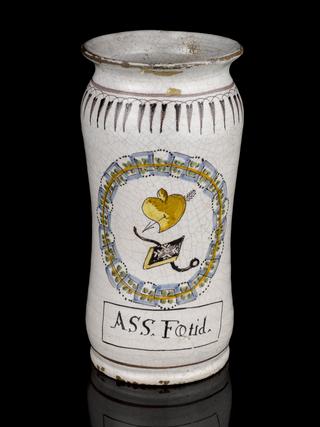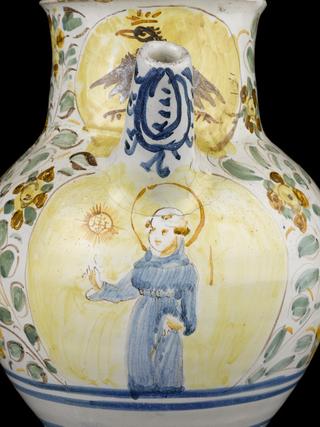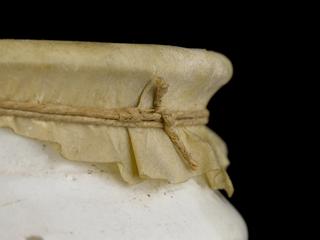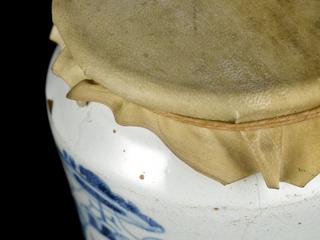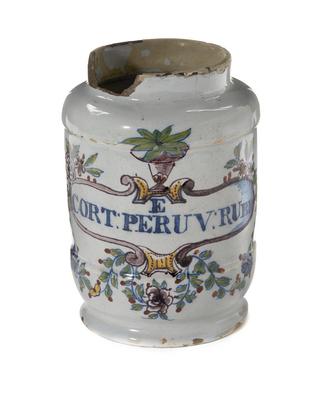
Dispensing pot of Blue Pills, England, 1880-1930
- Made:
- 1880-1930 in Kingston upon Hull
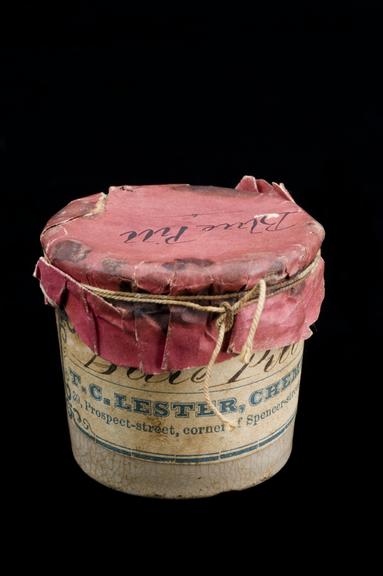
Earthenware dispensing pot, tin-glazed, with original paper cover and contents, 'blue pills' by T.C. Lester, 39, Prospect-street, corner of Spencer-street, Hull, 1880 to 1930
‘Blue Pills’ were found in many pharmacies and dispensing chemists throughout the 1800s and beyond. Used for a range of ailments as varied as constipation, tuberculosis and toothache, Blue Pills contain mercury and were potentially toxic, slowly poisoning the patient. The mercury content also hints at one of their other uses – as a medicine against the venereal disease, syphilis.
Pills and treatments were often placed in earthenware dispensing pots like this one, which were covered with brown paper or vellum and tied with string. This example has the name of the pharmacist, “T C Lester”, and his address painted on to the side.
Details
- Category:
- Medical Ceramic-ware
- Collection:
- Sir Henry Wellcome's Museum Collection
- Object Number:
- A640024
- Materials:
- earthenware (tin-glazed), paper (fibre product), materia medica and complete
- Measurements:
-
overall: 43 mm 47 mm, .11kg
- type:
- dispensing pot
